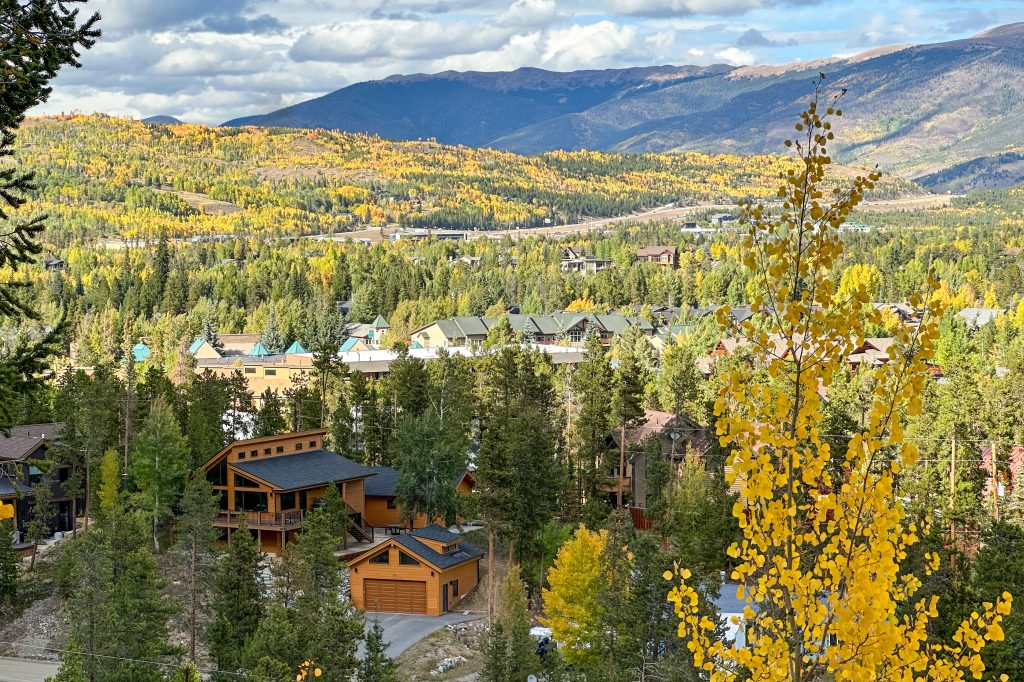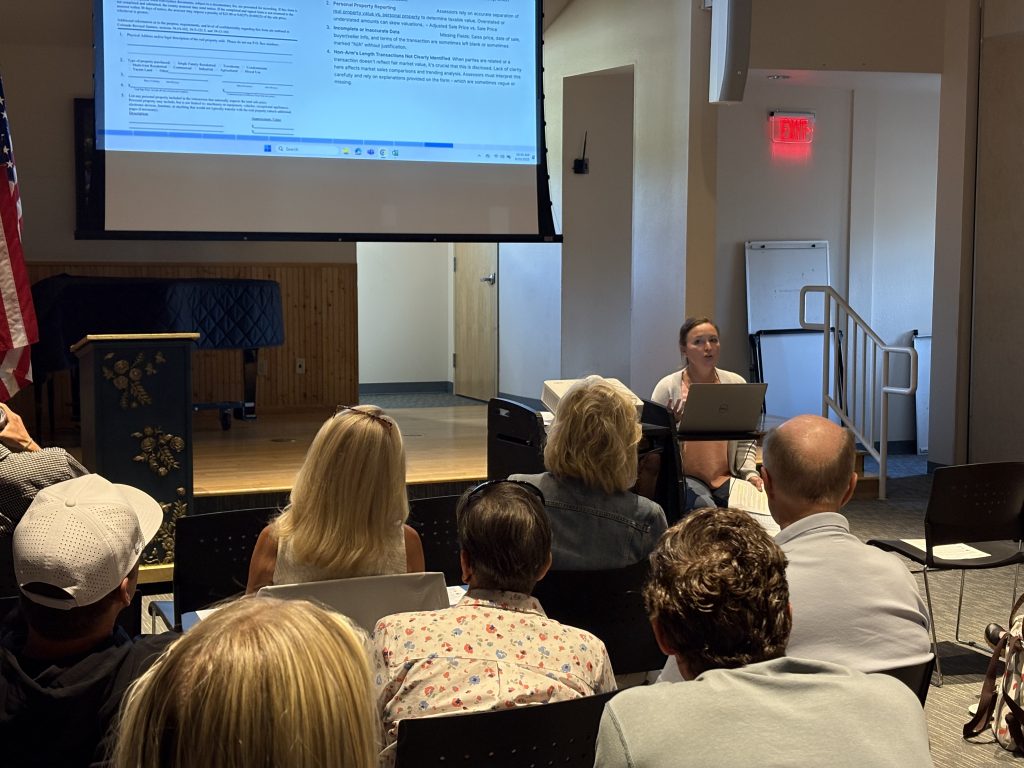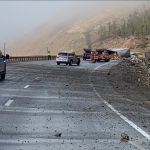Summit County assessor explains changes to the equation for property taxes

Andrew Maciejewski/Summit Daily News
The Summit County assessor discussed the 2025-2026 property valuation cycle and how property tax calculation varies from years past at an Aug. 20 event for real estate professionals.
Assessor Lisa Eurich presented at the annual event, put on by Land Title Guarantee Co., and explained how calculating property taxes has gotten “so much more complicated” this year.
The process starts with the actual value of a property as of June 30 of the previous year. The Summit County Assessor’s Office calculates the actual value using different approaches depending on the classification of the property. The office uses the classification of the property as of Jan. 1 in its calculations.
For residential properties, the assessor only uses the market approach, where assessors use multiple regression analyses to compare a property to recent sales of similar properties. The data used in that analysis is typically from the prior 18 months, but it can stretch back as far as 60 months.
The Assessor’s Office multiplies the actual value by the assessment rate to find the assessed value, which is the value of the property that gets taxed. A change to this step in Colorado this year is what makes the process more complicated, said Eurich.
“We now have two residential assessment rates, one for local governments and one for the school district.” Eurich said. “The folks under the gold dome in Denver thought that that would be a great way to ensure our schools get the proper funding that they need.”
Two residential assessment rates means properties have their actual value multiplied by each one individually to result in two assessed values, one for local governments and the other for school districts.
Mill levies for local governmental entities are then multiplied by the local government assessed value, and mill levies for school districts and multiplied by the school district assessed value. The resulting amounts are the local government and the school district property taxes, which add together to equal the total property tax.
Eurich explained how Summit County residents can use the county website to estimate their 2025 property taxes. To start, they can visit SummitCountyCO.gov/services/assessor and find a link for PrISM, or the county’s property information search and maps site, and a link to a page explaining 2025 property tax estimates.

On the PrISM site, owners can find their property and click on its details page, which shows the property’s 2025 actual value and tax area code. If they plug those figures into a spreadsheet available for download on the assessor’s property tax estimation page, they can see their estimated 2025 property taxes.
The spreadsheet clarifies that its calculations are an estimate based on 2024 mill levies, as those for 2025 will not be certified by the Summit Board of County Commissioners until December.
Eurich also discussed a change in the way her office communicates with residents about their property values. It previously provided “comps,” or a list of around five properties that had sold within the relevant timeframe and factored into the analysis for that property. Providing that list led to low-quality appeals, Eurich said.
“When they just kind of poo-poo on the sales, they don’t really tell us about their property,” Eurich said. “What is going on? Did you have a flood? Did you, you know, build a patio with siding?”
Not providing the comparisons leads to better appeals, Eurich said, and makes the valuation process more efficient for the Assessor’s Office. She said it is less misleading to homeowners because the multiple regression model uses more than the few listed comparisons to value their home, and she added that this model is “what everybody else is doing.”
“Instead of people saying, ‘This sale is not good, this sale is not good, this sale is not good,’ it’s like, ‘Yeah, you have a custom home in Eagles Nest,'” Eurich said. “‘Of course it’s not an exact (comparison) to you. Tell us why your house is not worth so much.'”
The Colorado State Board of Equalization finalized the assessment rates for residential properties at a meeting Oct. 10. The local government rate is 6.25%, and the school district rate is 7.05%. The rates could have gone down by 0.1% each if the statewide overall actual value had grown by more than 5% from 2024-2025, but the state determined its growth was 4.27%.
County assessors will certify classifications and valuations to taxing entities by Dec. 10, and property owners will pay their 2025 property taxes in 2026.

Support Local Journalism

Support Local Journalism
As a Summit Daily News reader, you make our work possible.
Summit Daily is embarking on a multiyear project to digitize its archives going back to 1989 and make them available to the public in partnership with the Colorado Historic Newspapers Collection. The full project is expected to cost about $165,000. All donations made in 2023 will go directly toward this project.
Every contribution, no matter the size, will make a difference.










